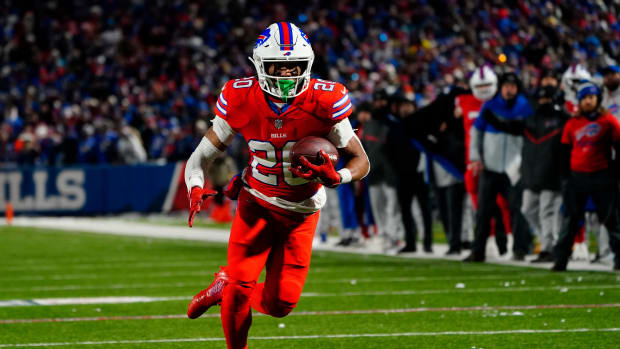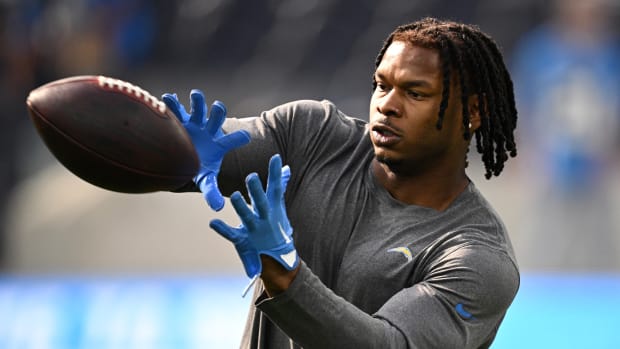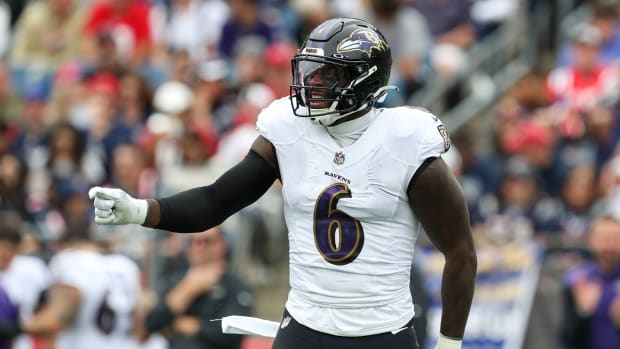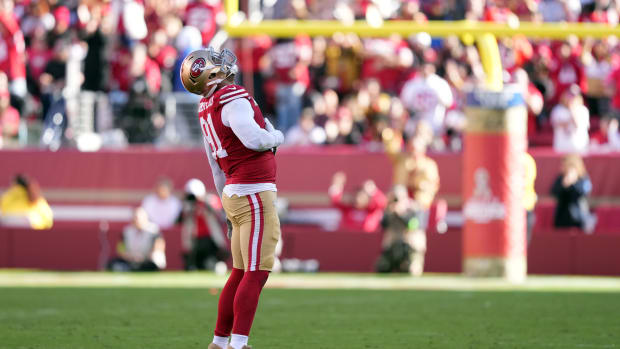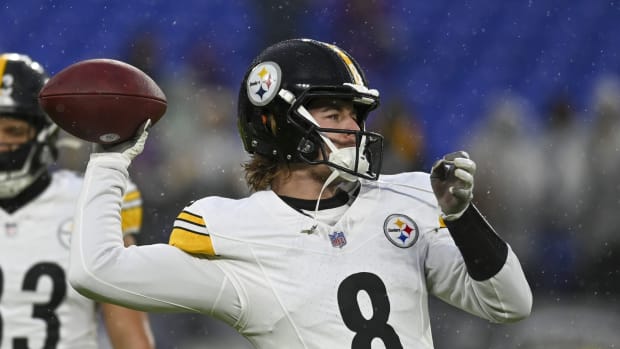
Football’s Other Recruiting
We have now reached “go time” for agents in their pursuit of 2014 NFL Draft prospects. Once the college football regular season ends and teams have down time prior to their bowl games, the focus of the top players and their coaches, parents and advisors turns to the agent selection process. Football's other recruiting season officially has commenced.
As I write this, I am returning from College Station, Texas, having spoken to Texas A&M’s draft-eligible players about their decisions ahead, selecting an agent and preparing for professional football and beyond. Several schools—although still not enough—provide similar services for their players. Too many players are left to fend for themselves in a complex landscape of decisions ahead.
Players cannot actually sign with an agent prior to the expiration of their eligibility, which usually is following their bowl game. However, player decisions often are made this week or next, with the formal signing of the SRA (Standard Representation Agreement) often within hours of the end of their bowl game. By the time the college all-star game schedule begins in mid-January, virtually every draft-eligible player has signed with an agent.
There are approximately 800 agents currently certified by the NFL Players Association to represent 1,800 NFL players, with more being added every year. And with so many agents and relatively few top players, the players can dictate not only the fee paid to an agent, but also create an environment for abuse and enticements: money, trips, cars, women, club visits, game tickets, etc. I often hear agents lamenting the cutthroat nature of the industry, saying how dirty it has become. I usually then ask them why they don’t get out of it, to which they often respond, I still love it!
Let’s take a look inside the agent game.
Drew Rosenhaus might be the most recognizable agent, and that's no accident. As this image of 49ers RB Frank Gore after the 2012 NFC Championship Game shows, Rosenhaus is always near the action. (Chris Graythen/Getty Images)
The sell
Recruiting is the lifeblood of the agent business. In simplest terms, recruiting involves sitting with a young man, often a very large young man, and convincing him he should sign with you instead of the many others trying to sign him.
NFL agents have been working on the class of 2014 since the spring, if not earlier. Although many players (and their coaches and parents) advise agents to wait until after the season to contact them, too many experienced agents have been burned following those instructions, finding out they have lost the player to an agent who has ignored those rules.
Agents will look for any possible angle into a player during the recruiting process; cold calls do not work, the business is too competitive for that. The usual ways into a student-athlete's selection process include: (1) relationships with (or representation of) a school’s coach or coaches, (2) representation of players that the student-athlete knows and/or trusts, (3) representation of players from the student-athlete's school, (4) representation of players from the student-athlete's hometown, or (5) being well-known names in the industry.
I remember taking an offensive lineman out to dinner and watching him order "the left side of the menu." I laughed; he didn’t.
Agents are recruiting in all they do. Drew Rosenhaus is a conspicuous example of this, constantly putting himself in public view in order to be top of mind when players decide on an agent (or leave their prior one). Rosenhaus, much to the dismay of rival agents, is always adding clients; when I was with the Packers, he would sometimes come to Green Bay to visit one client and leave with one or two more.
I have many recruiting stories from my days as an agent; here are a couple that stand out. I remember going to a player’s off-campus apartment and opening the door to find eight guys sitting around a bong. (I did not partake.) I remember taking an offensive lineman out to dinner and watching him order “the left side of the menu.” I laughed; he didn’t. (I did not sign him). I remember coming out of a home in a rough section of Cleveland one time to find my rental car on cinder blocks. (I never found the wheels.) And I remember finishing certain meetings with both players and family members who lingered at the door, waiting for me to make an offer to secure their signature, something they had become used to receiving them from other agents. (I never had one.)
The marketing guarantee
While some of the top agencies in the business will not make such illicit offers, they will offer something more innocuous but powerful in securing top players.
Marketing guarantees are essentially advances on future marketing income, with the agent or agency accountable for the difference if they do not secure the full amount. For instance, an agent or agency will offer a player a player a $500,000 marketing guarantee, payable against all future marketing income brought to the client. In the event the agency only secures, say, $350,000 of future marketing income for the player, it assumes the $150,000 difference as a cost of doing business. While not illegal, this is a measure that large agencies with ample resources use to separate themselves from the smaller firms.
Speaking of necessary costs of doing business…
Linebacker Manti Te'o worked out at IMG Academy in Bradenton, Fla., after Notre Dame's 2012 season ended and before the draft last April. Many prospects opt to train at these specialized facilities, with their agents footing the five-figure bill to attend. (J. Meric/Getty Images)
The training
Back in the olden days when I was an agent, preparation of NFL prospects for the scouting combine consisted of hiring a speed coach to improve a player’s 40 time and asking some mock interview questions the day before arriving in Indianapolis. That was then, this is now.
Pre-combine training is now big business, with full-service training centers such as Athletes Performance Institute (API) in Arizona and International Management Group (IMG) in Florida charging as much as $25,000 per opening (usually pre-booked by the agency months in advance). From the time the players sign with their agency until the combine (and sometimes beyond), players are under the full-time care of these centers in comprehensive preparation for the Combine, with all costs borne by the agent.
Providing this service makes good business sense for eventual first-round picks set to secure $15-20 million contracts with hundreds of thousands of eventual fees. However, due to the intense competition in the industry, these services are now provided to players that end up being drafted far lower, or even not at all, becoming loss leaders for the agent. For instance, say a player that received this training is eventually drafted in the fifth round, with a signing bonus of $200,000. The maximum agent fee (3 percent) on the bonus of $6,000 is far less than the $15,000-$20,000 invested in training on the player. And that is just one player. One can see the perils in the business of representing rookie players.
Yes, there are players who choose to forego training at one of these specialized centers, opting to remain at his college to use other available means. But players have come to expect this service, and agents who are deficient in this area often are removed from consideration.
What to ask
The following are some of the questions I advise players and their families to be clear with the agent during the interview process:
- What types of services are offered, and for what fee?
- Are the fees the same for every client? Why are some different?
- Are financial services offered and if so, what strategies are used?
- How is the agent’s time divided amongst their various clients?
- What is the strategy for injury treatment and rehabilitation?
- If there is more than one agent in the group, who will be the “point person?”
- Has the agent been fired before? What would the player that fired the agent say about it (ask to talk to him)?
- What is their “damage control” plan if there were a crisis?
In evaluating and selecting agents, many players and their families are faced with the dilemma of big vs. small. The bigger agents or agencies tout influence and clout provided by their name and reputation. The smaller agents sell personal attention and care, warning players of the dangers of getting lost with an agent with dozens of clients. Ultimately, it is a matter of personal preference, although it is important for a player to honestly assess where he will fit in the pecking order of the agent’s client roster.
I tell players and their families that hiring a sports agent is like bringing another family member into the fold. The two phrases I hear most often when asking why a player chooses a certain agent over others are gut feel and comfort level. It is an important decision based primarily on trust, which is difficult to measure in a couple of meetings and conversations. That is why references and research are so important.
Tom Condon (center) co-heads the Creative Arts Agency (CAA) football division and is considered to be the most powerful agent in the business, counting Eli Manning and Peyton Manning among his roster of A-list clients. (David Drapkin/AP)
The fee
The recent collective bargaining agreement took a machete to the previous rookie contract compensation system. Now, not only is the four-year length of drafted player contracts mandatory, but also the amount of money for each pick is largely predetermined, which is leading to some uncomfortable conversations about fees.
I receive an increasing number of questions from players, their families and advisors asking, If rookie contracts are pre-determined, why am I paying a fee? It is a question that agents have to answer with greater frequency, especially noting the hundreds of thousands of dollars in savings garnered by Matt Elam, the first-round pick of the Ravens that negotiated his contract without an agent. More and more players and their families are noting the “Elam model” when discussing fees with prospective agents.
To be fair, agents do offer several other services beyond the negotiation of the contract’s final contract numbers, including:
- Negotiation of offseason injury protection
- Negotiation of signing bonus payment terms
- Negotiation resisting offset language
- Arranging training and interview preparation for the combine
- Coordinating Pro Day workouts and interviews
- Managing the player’s family and friends
- Providing a credit line for income prior to signing a contract
- Reviewing lease and other documents presented to the player
- Being a trusted adviser, friend and counselor
However, many of these services are outside of the standard fee model and provided disproportionately in the first year of players’ careers, as opposed to continuing through the length of their contracts.
Agents guard their fees with extreme secrecy and are particularly sensitive to having clients know about other clients’ fee arrangements. My sense, though, is that few agents are receiving the maximum 3 percent for rookies at the top of the draft due to the competitive nature of the marketplace. And after seeing what Elam did, there will be even greater downward pressure on these fees.
Coming Friday on The MMQB ... Part 2, which will be a look inside the author's time recruiting Ricky Williams (who ultimately chose Master P for representation) and the entry of Jay-Z into the agent industry.




































